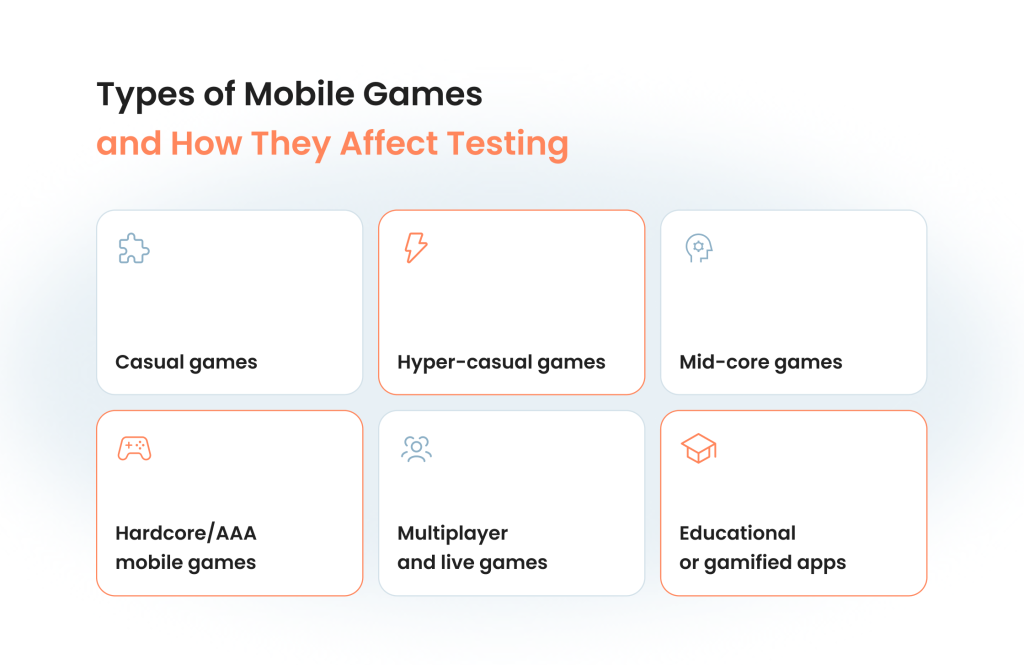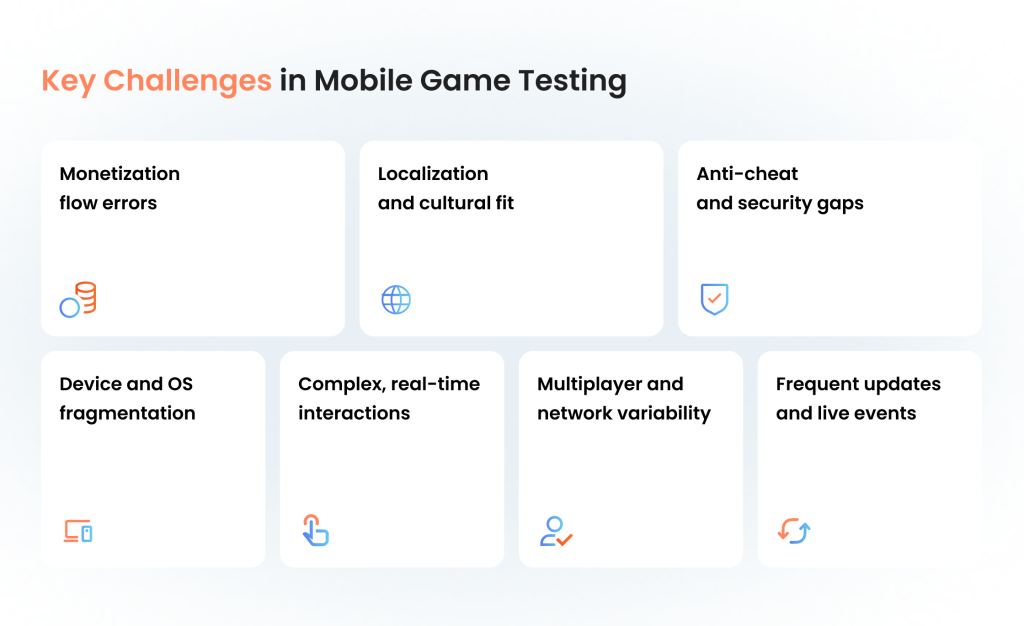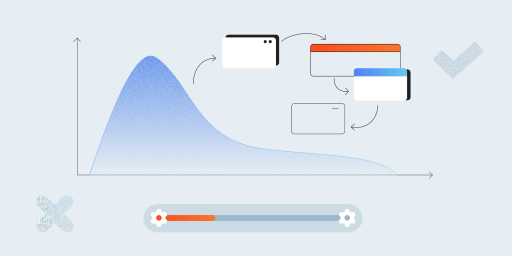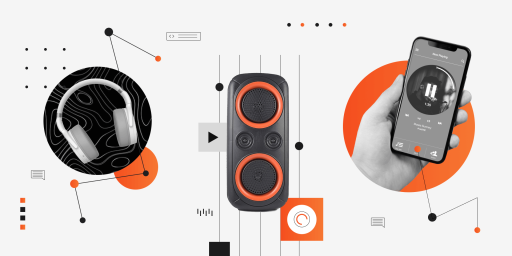The mobile gaming industry moves fast, but players move on even faster. One crash, one lag spike, or one broken reward can mean thousands of lost users. That’s why testing isn’t just a mobile game development step — it’s a make-or-break part of your product’s success.
In this guide, we’ll walk you through what makes mobile game QA different, what it takes to do it well, and how the right testing strategy can turn good gameplay into a lasting player experience.
Key Takeaways
- Mobile game testing evaluates gameplay, performance, compatibility, monetization, and backend services to ensure a polished user experience.
- QA prevents negative reviews, ensures smooth play across devices, validates in-app purchases, and maintains app store compliance.
- Different game genres require tailored testing focusing on specific features, performance needs, and player interactions.
- Common testing types include functional, performance, load, compatibility, usability, localization, security, compliance, and regression testing.
- Manual testing handles real-time gameplay and UX, while automation covers repetitive tasks and regression efficiently.
- Android game testing companies address device fragmentation, while iOS game testing services focus on OS updates and App Store rules.
- Testing on real devices is vital, as emulators can’t fully replicate hardware-specific issues.
- QA tools support automation, performance monitoring, network simulation, and beta testing throughout development.
- Key challenges include real-time interaction, multiplayer networking, frequent updates, monetization accuracy, localization, and anti-cheat security.
- A strong QA strategy involves early, continuous testing, clear goals, device coverage planning, pipeline integration, and balanced test methods.
- The right partner offers game-specific expertise, broad device access, balanced testing, live operations support, and clear communication.
What Is Mobile Game Testing and Why Does It Matter?
Mobile game testing is the process of evaluating a game’s functionality, performance, compatibility, and overall quality across different mobile devices and operating systems. The goal is to identify and resolve bugs, inconsistencies, and technical issues before the game reaches users.
Unlike general mobile app testing, testing of mobile games requires a focus on real-time responsiveness, immersive user experiences, and complex gameplay mechanics. Testers must account for varying user behaviors, device capabilities, and environments, such as unstable networks or limited hardware resources.
Mobile game testing typically involves a combination of manual and automated methods to cover areas like core gameplay, controls, graphics, sounds, monetization features, and backend services such as multiplayer logic or cloud saves.
It’s a highly iterative process that begins early in game development and continues through launch and post-release updates, ensuring that the game meets both technical requirements and player expectations.
Why it’s important to test mobile games
With thousands of excellent games to choose from in every category imaginable, users are not going to settle for anything less than a flawless game application that delivers a consistent experience in any scenario. The mobile game testing process is designed to ensure the game is ready to meet and wow its players. Here is why else mobile game testing is crucial:
Prevent negative reviews and uninstallations. Players have little patience for buggy or broken games. Even a minor glitch can result in poor ratings, reduced visibility in app stores, and a significant drop in user retention.
Ensure smooth gameplay across devices. With thousands of device models in circulation, especially on Android, it’s essential to test how the game performs on different screen sizes, OS versions, and hardware configurations to avoid game-breaking issues.
Identify functional bugs and logic errors. Core mechanics, game rules, UI elements, and player progression must work exactly as designed. Missed bugs in these areas can ruin the experience or block progression entirely.
Catch performance issues early. Mobile games must run efficiently without lags, frame rate drops, excessive battery use, or overheating. Performance issues are one of the top reasons players quit and uninstall games.
Validate in-app purchases and ads. Errors in payment flows, reward delivery, or ad display can directly impact revenue and damage user trust. Every monetization path needs thorough testing across scenarios.
Maintain a consistent user experience in all environments. Whether users are playing offline, on a slow 3G connection, or switching between networks, the game must behave predictably and recover gracefully from connectivity issues.
Comply with app store requirements. Both Google Play and the App Store enforce strict guidelines. Poor testing can lead to rejection or delays in launch, especially if crashes or content violations are detected.
Support updates and live operations. Mobile games often evolve through seasonal content, patches, and limited-time events. QA ensures that new changes don’t break existing features or introduce new bugs.
Detect and prevent security vulnerabilities. Multiplayer games are especially vulnerable to cheating, exploits, or data breaches. Security testing protects your players and your reputation.
Build trust and grow a loyal player base. A polished, bug-free experience reflects positively on the game studio and increases the chance that players will stay, spend, and recommend the game to others.
Types of Mobile Games and How They Affect Testing
Not all mobile games are created equal, and neither are their testing needs. The game’s genre, complexity, game mechanics, target audience, and monetization model all influence the testing strategy, testing frameworks and tools, as well as the selection of different types of testing. Below are the most common types of mobile games and what they mean for QA.

Casual games
These games are often puzzle-based or arcade-style with moderate complexity. Testers need to cover multiple levels, progression mechanics, in-app purchases, and social sharing features. Cross-device compatibility is especially important here.
Hyper-casual games
These are lightweight, minimalist games with simple mechanics and quick gameplay loops. Testing focuses on UI responsiveness, ad integration, and performance across low-end devices. Since updates are frequent, fast regression testing is crucial.
Mid-core games
These games offer more depth, often involving character progression, resource management, or turn-based strategy. QA teams must validate in-game economies, balance, multiplayer features, and longer user sessions. Test automation and test data management often play a bigger role.
Hardcore/AAA mobile games
These titles mimic console or PC-like experiences with high-end graphics and real-time multiplayer. Testing is intensive and must include device performance profiling, stress testing, network fluctuation handling, and security validation to prevent cheating or exploits.
Multiplayer and live games
Any game with PvP, co-op, or matchmaking introduces a new layer of complexity. Testing must simulate real-world conditions (such as lag, disconnects, sync issues), validate server logic, and ensure fairness between players.
Educational or gamified apps
These games combine learning with interaction and often involve adaptive content. Testing focuses on logic accuracy, personalization features, and accessibility.
The Most Common Types of Mobile Game Testing
Mobile games are complex, interactive systems that require thorough testing from multiple angles. Below are the most common types of testing used to ensure quality, stability, and a seamless player experience:
- Functional testing. This activity is used to verify that the game works as intended. This includes core gameplay mechanics, user interface, navigation, controls, menus, level transitions, scoring systems, and win/loss conditions.
- Performance testing. A common mobile game testing type that evaluates the run of the mobile game in real-world conditions, both normal and stressful. Mobile game performance testing measures frame rate stability, memory usage, battery consumption, CPU/GPU load, and app responsiveness across different devices.
- Load testing. Mobile game load testing simulates high user volumes and concurrent gameplay sessions to check how the game — and especially backend services like matchmaking or leaderboards — handles stress. This is critical for multiplayer games and launch readiness.
- Compatibility testing. This type of testing ensures the game runs smoothly on a wide range of mobile devices, screen sizes, resolutions, chipsets, and operating system versions. Given the fragmentation of Android in particular, this testing type is essential.
- Usability testing. UX and usability testing assess how intuitive and enjoyable the user experience is. This includes evaluating first-time user flows, menu clarity, control responsiveness, and accessibility for different types of players.
- Localization testing. This is used to check translated content for accuracy, context, UI overflow, and formatting issues. Localization testing is essential for assessing cultural appropriateness and ensures the game behaves correctly in various regional settings like date formats and currencies.
- Security testing. Security tests help identify vulnerabilities related to cheating, data leaks, tampering with in-app purchases, or unauthorized access to player accounts and game servers. That’s why security testing should never be skipped.
- Compliance testing. This helps verify that the game adheres to app store policies, platform guidelines, and relevant regulations such as GDPR and COPPA. Failure to comply can lead to rejection or removal from app stores.
- Regression testing. Teams perform regression testing to ensure that after code changes, updates, or bug fixes, previously working features still function correctly. This is crucial in games with frequent updates, events, or evolving content.
Mobile Game Testing Techniques: Manual Testing vs. Automated Testing
Effective mobile game QA relies on a smart mix of manual testing and automation. Each approach has its strengths, and choosing the right one depends on the game’s design, platform, and development pace.
Manual testing
Manual testing is essential for validating complex, real-time interactions, visual quality, and overall user experience. Human testers can assess gameplay flow, intuitive controls, responsiveness, and edge-case behaviors that automated scripts may miss. It’s especially valuable for:
- Exploratory testing
- New feature verification
- UI/UX evaluation
- Ad placement and IAP behavior
- Multiplayer and network disruption scenarios
Manual testing also plays a key role in localization, accessibility checks, and player feedback validation during beta testing.
Automation testing
Mobile game automation testing helps speed up repetitive tasks and improve coverage across devices. It’s most effective when applied to stable, predictable areas of the game, such as:
- Main menu navigation
- Login and registration flows
- Settings and non-interactive screens
- Regression testing of known functionality
- Basic gameplay sequences in casual or turn-based games
Frameworks like Appium, Unity Test Framework, or AltUnity Tester allow teams to script tests that run across multiple devices and OS versions, reducing human error and effort in large-scale projects.
Finding the right balance
Because mobile games are highly interactive, automation cannot fully replace manual testing. Instead, it should complement it, freeing up testers to focus on high-value areas while automation handles the routine. The right blend ensures broader coverage, faster release cycles, and a more consistent gaming experience across devices and updates.
Performing Mobile Game Testing Across Different Platforms
Testing mobile games across platforms isn’t just about checking that things “work” on both Android and iOS — it’s about understanding how each platform behaves, how users interact with it, and how the underlying ecosystems affect quality.
Android vs. iOS: different platforms, different priorities
Android game testing is especially demanding due to the vast fragmentation in the Android device market. With thousands of models running different OS versions, screen sizes, and chipsets, compatibility and performance issues are common. An experienced Android game testing company will select a representative mix of devices based on your game’s target audience and regions to ensure maximum coverage.
Android game testing services also focus on issues like UI scaling, background process interference, and manufacturer-specific behaviors, which may not appear in emulators. Games that perform well on one Android device might break on another, making real-device testing essential.
In contrast, iOS game testing services deal with a more standardized environment, but the stakes are just as high. Apple’s frequent OS updates, limited backward compatibility, and strict App Store policies mean that even minor bugs can delay your launch or result in rejection. Device-specific performance testing, especially between newer and older iPhones, is also critical.
Real devices vs. emulators
While emulators and simulators are helpful for early-stage testing and automation, they can’t fully replicate how games behave on actual hardware. They miss key factors like input responsiveness, network fluctuations, GPU limitations, or battery usage.
For both Android and iOS games, real-device testing is vital for accurate performance profiling, gameplay validation, and final release QA. Many Android game testing companies and QA providers use cloud-based labs (like Firebase Test Lab or BrowserStack) to access a wide range of physical devices without maintaining an in-house collection.
Don’t Let a Single Bug Go Unnoticed
We have 250+ physical devices for testing
Consistency builds player trust
Whether on Android or iOS, even small inconsistencies in UI, controls, or ad behavior can hurt player satisfaction. Cross-platform testing ensures your game delivers the same level of polish, stability, and engagement, no matter where it’s played.
Mobile Game Testing Tools to Consider
Choosing the right tools can significantly improve the efficiency and coverage of testing, allowing mobile game testers to cover more ground in less time and ensure more consistent results. Below are some widely used platforms and frameworks that support different aspects of the mobile game QA process.
Functional and automated game testing
Tools for verifying game logic, UI behavior, and user interactions, automatically or manually:
- Appium. Open-source tool for automating mobile UI testing; useful for navigation flows and simple game interactions.
- Unity Test Framework. Built into Unity, it supports unit and integration testing of game logic directly within the engine.
- AltUnity Tester. Designed for Unity games, it allows UI automation by interacting with game objects rather than screen coordinates.
- Airtest + Poco. A visual automation tool from NetEase, combining image recognition with object-based testing; suited for 2D/3D mobile games.
- Detox. A grey-box testing framework for mobile apps, useful for games built with React Native.
Performance and stability monitoring
Tools that help track in-game performance metrics, detect bottlenecks, and prevent crashes:
- GameBench. Game-focused performance analysis platform for real devices; tracks FPS, CPU/GPU usage, memory, and power consumption.
- Firebase Performance Monitoring. Tracks latency, rendering times, and network usage; integrates well with Firebase-based games.
- Crashlytics. Real-time crash reporting tool with detailed diagnostics, stack traces, and impact analysis.
- Backtrace. Crash and exception management solution built for games, with support for native and cross-platform engines.
Network and backend testing
Important for testing multiplayer features, server sync, and in-game communication:
- Charles Proxy. Inspects HTTP/HTTPS traffic, useful for analyzing in-game API calls, purchases, and server interactions.
- Fiddler. Similar to Charles Proxy; helps test backend connectivity, response validation, and simulate throttled networks.
- Wireshark. For more advanced users, this network protocol analyzer provides low-level packet inspection in real-time sessions.
Device compatibility & cloud testing
Test on real devices at scale across different OS versions, screen sizes, and hardware configurations:
- Firebase Test Lab. Cloud-based device testing across many Android devices; integrates with CI pipelines.
- BrowserStack App Live. Provides remote access to a wide range of real iOS and Android devices for manual and automated testing.
- Sauce Labs. Similar to BrowserStack, offering cross-platform device testing with parallel test execution support.
- Kobiton. Device lab management and testing platform for automated and manual mobile testing.
Beta testing & user feedback
Tools to distribute pre-release builds, gather feedback, and observe real user behavior:
- TestFairy. Lets you share builds with testers, record sessions, and collect crash data and feedback.
- HockeyApp (now part of App Center). Microsoft’s solution for beta distribution, crash reports, and user analytics.
- Google Play Console/Apple TestFlight. Official platforms for distributing test builds, collecting feedback, and managing external testers.
The right toolset depends on your tech stack (Unity, Unreal, or custom engine), the game’s complexity, and the level of in-house QA automation. For most teams, a combination of visual testing tools, real-device performance tracking, and crash analytics delivers the best coverage.
Unique Elements of Mobile Gaming: How Do They Impact QA?
Mobile game testing goes far beyond standard app QA. Games are dynamic, interactive, and constantly evolving, which introduces a specific set of challenges that require a tailored approach. Here are the areas that make mobile game testing different from other software testing tasks.

Real-time gameplay and user behavior
Games are designed to be immersive and reactive, meaning even small delays, input lag, or glitches can break the player experience. Testers must assess not just whether something works, but how smoothly and intuitively it works under pressure. Timing, responsiveness, and feedback loops all play a critical role in gameplay satisfaction.
Multiplayer, connectivity, and backend logic
Multiplayer and live-service games rely heavily on stable, real-time communication with servers. QA teams must test scenarios involving latency, packet loss, server delays, matchmaking fairness, synchronization issues, and player disconnections. This requires simulating various network conditions and edge cases, especially in PvP or co-op environments.
Live updates and event testing
Unlike most apps, games often run on seasonal content, time-limited events, or live balance changes. QA must validate frequent updates quickly while ensuring older features still work. This makes testing for regressions and rapid test cycles essential to avoid disrupting the user experience during live ops.
In-app purchases and ads
Monetization is baked into many mobile games via ads, reward systems, and in-app purchases. Testers must verify payment flows, ad placements, reward delivery, and error handling, in case of issues like failed transactions or missing items. Ad-related testing also includes integration with third-party ad networks and ensuring compliance with app store policies.
Localization and accessibility
Games are released globally, and any translation issues or cultural mismatches can break immersion or even offend players. Localization testing ensures that translated content fits in the UI, reads naturally, and behaves correctly. Accessibility is also becoming more important, especially for casual and educational games, and must be validated across devices and input methods.
Serve users better and comply with industry standards with our accessibility testing services
How to Develop a Successful Strategy for Mobile Game QA
A solid QA strategy is the backbone of any successful mobile game release. Without a clear plan, mobile game QA testing becomes reactive, fragmented, and prone to costly oversights. Here’s how to build a QA process that supports quality from day one.
1. Align QA with development stages
Start testing early — ideally during prototyping or alpha builds. This helps catch fundamental design flaws, logic gaps, or performance issues before they grow into major blockers. Adjust the depth and scope of testing as the game evolves toward beta and release.
2. Define what success looks like
Set clear quality goals: performance benchmarks, crash tolerance levels, supported device list, multiplayer stability, ad performance, and compliance requirements. These criteria will guide your test coverage and priorities.
3. Choose the right mix of testing types
Incorporate functional, performance, compatibility, usability, and regression testing as core layers. Add security, localization, and compliance testing where relevant. A successful mobile game QA strategy is never one-size-fits-all — it’s tailored to the game’s genre, complexity, and audience.
4. Balance manual and automated testing
Use automation for repeatable flows and regression, but rely on manual testing for gameplay, visuals, and user experience. This hybrid approach ensures speed without compromising quality.
5. Plan for real-device coverage
Test across a carefully selected range of devices that reflect your user base. Don’t rely on emulators alone — real-device testing is essential to catch hardware-specific issues.
6. Integrate QA into your release pipeline
QA should be embedded in your development process, not an afterthought. Use continuous testing to support frequent builds, updates, and live events without sacrificing stability.
Key Challenges in Mobile Game Testing
Testing mobile games comes with unique hurdles that often go beyond typical app QA. These challenges impact time-to-market, user satisfaction, and long-term revenue if not addressed properly. These are the challenges testers are most likely to encounter when testing a mobile game app.

Device and OS fragmentation
The thousands of Android devices, varied screen sizes, chipsets, and OS versions make consistent performance difficult to guarantee.
How to overcome: Build a prioritized device matrix and test on real hardware using cloud device labs or an in-house collection.
Complex, real-time interactions
Timing, animation, touch sensitivity, and gameplay flow must feel seamless — something automation alone can’t fully evaluate.
How to overcome: Combine exploratory manual testing with well-defined test cases focused on gameplay feel and responsiveness.
Multiplayer and network variability
Real-time syncing, disconnections, lag, and cross-platform issues are hard to simulate and easy to miss.
How to overcome: Use network simulation tools to test under poor conditions, and validate multiplayer logic with structured test scenarios and edge cases.
Frequent updates and live events
Regular patches, balance changes, and new content can introduce regressions and break stable features.
How to overcome: Perform regression testing to ensure stability and integrate continuous QA into the update pipeline.
Monetization flow errors
Broken in-app purchases or ad integrations result in revenue loss and angry players.
How to overcome: Test all payment paths and ad scenarios (success, failure, interrupted flows) across multiple devices and network conditions.
Localization and cultural fit
Poor translations, UI text overflow, or culturally inappropriate content can disrupt the user experience.
How to overcome: Combine linguistic review with localization testing in real environments and devices set to target regions.
Anti-cheat and security gaps
Exploits, cheats, and backend manipulation can undermine fair play and damage your brand.
How to overcome: Include security testing, anti-cheat validation, and backend vulnerability checks in your QA process, especially for multiplayer games.
Working With a Mobile Game Testing Company: What to Look For
Partnering with a mobile game testing company can significantly reduce risks, speed up time-to-market, and improve user retention — but only if you choose the right one. Not all QA providers are equipped for the demands of mobile games, which involve real-time responsiveness, device fragmentation, in-app purchases, and frequent content updates.
What to look for in a QA partner
- Expertise in mobile game testing services. Look for a provider that understands not just mobile platforms, but the specific dynamics of gameplay testing: input timing, device overheating, ad behavior, and user progression.
- Access to real devices. Emulators have limits. A serious QA team should test on a wide range of physical Android and iOS devices to catch edge cases early.
- Balanced test strategy. The best companies combine manual and automated testing to cover both gameplay experience and repetitive flows like login, menus, or IAP.
- Support for live operations. Games don’t stop after launch. Your partner should be able to handle regression testing, seasonal updates, and performance optimization as part of ongoing mobile game testing services.
- Transparent communication. A responsive, detail-oriented team will provide clear reporting, frequent check-ins, and actionable QA insights, not just bug lists.
Why choose us for mobile game testing services
TestFort is more than a team of bug-hunters — we’re a QA partner that understands how games should feel, function, and perform in the hands of real players. Our mobile game testing services are designed to help studios release confidently, scale quickly, and keep players engaged long after launch. From first-time user flows to multiplayer sync, we test where it matters — on 250+ real devices, across iOS and Android, using a balanced mix of manual and automated methods. As a result, you get better stability, smoother gameplay, fewer production delays, and happier users.
Over the years, we’ve worked on mobile games with social, multiplayer, and real-time interaction features. Below are two examples that show how our testing services directly supported product success.
Social gaming app for iOS with gamified features
For a startup creating a social app with game-like elements, we delivered end-to-end QA alongside development. Our team conducted usability, integration, stress, and automated regression testing through a CI pipeline, ensuring each release met user experience expectations. Our involvement helped reduce QA turnaround time by 40%, allowing the client to launch two weeks ahead of schedule without sacrificing stability.
Real-time multiplayer battle game for iOS
In a fast-paced 2D multiplayer game, we focused on ensuring real-time stability, social feature reliability, and cross-device performance. Automated regression testing and load simulation helped catch early-stage sync issues and ensured smooth gameplay across iPhones. After launch, the app saw an average session length increase of 28% in the first month and achieved a 4.8 rating on the App Store — up from 4.2 during beta testing.
We Have Helped 10+ Game Studios Achieve Lasting Success With QA
Find out what we can do for your project.
Final Thoughts
In mobile gaming, quality isn’t just a nice-to-have — it’s one of the strongest competitive advantages there can be. A well-tested game builds trust, keeps players engaged, and supports long-term growth in a crowded market. Whether you’re launching a new title or scaling an existing one, reliable QA ensures that every update, feature, and interaction delivers the experience your players expect.
With the right testing partner, you don’t just catch bugs — you accelerate development, protect your reputation, and raise the bar for player satisfaction. And we are here to help you do exactly that.
Jump to section
Hand over your project to the pros.
Let’s talk about how we can give your project the push it needs to succeed!






